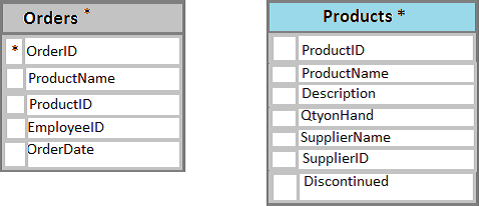HOTSPOT
Note: This question is part of a series of questions that use the same scenario. For your convenience, the scenario is repeated in each question. Each question presents a different goal and answer choices, but the text of the scenario is exactly the same in each question in this series.
You have a database named Sales that contains the following database tables: Customer, Order, and Products.
The Products table and the Order table are shown in the following diagram.

The customer table includes a column that stores the data for the last order that the customer placed.
You plan to create a table named Leads. The Leads table is expected to contain approximately 20,000 records. Storage requirements for the Leads table must be minimized.
You need to create triggers that meet the following requirements: Optimize the performance and data integrity of the tables. Provide a custom error if a user attempts to create an order for a customer that does not exist. In the Customers table, update the value for the last order placed. Complete all actions as part of the original transaction.
In the table below, identify the trigger types that meet the requirements. NOTE: Make only selection in each column. Each correct selection is worth one point.

Answer: 
Explanation:
INSTEAD OF INSERT triggers can be defined on a view or table to replace the standard action of the INSERT statement. AFTER specifies that the DML trigger is fired only when all operations specified in the triggering SQL statement have executed successfully.
References: https://technet.microsoft.com/en-us/library/ms175089(v=sql.105).aspx

Leave a Reply